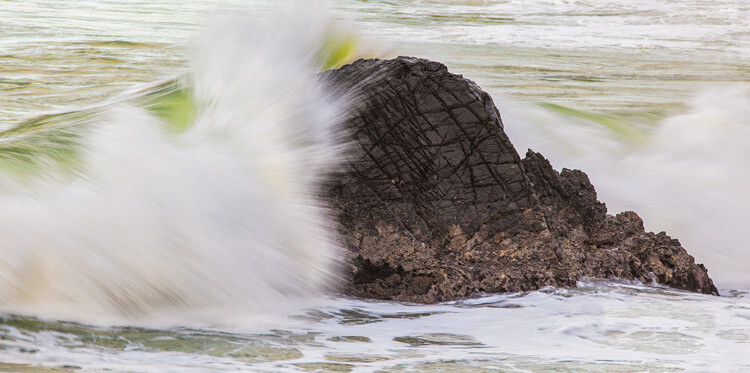So what exactly is shutter speed? In its simplest form, shutter speed refers to the length of time that your camera sensor is exposed to light (the shutter stays open) while taking a photo. A faster shutter speed thus lets in less light and a slower shutter speed lets in more light.

You may already be aware that shutter speed is one of the three elements of the Exposure Triangle that work in tandem. Thus changing your shutter speed leads to changing one of the two other elements (aperture and ISO) to compensate for your exposure.
Of the three, shutter speed is the one that allows you the most creative versatility. If you want to use shutter speed to make more artistic choices, let’s start with some basics.
1) Freezing Motion
Freezing action or motion happens at faster shutter speeds and literally captures a moment in time. If the shutter is open for a long time and your subject is moving, it looks blurred. On the converse side, when you have a faster shutter speed, any movement (blur) is less noticeable as it’s more frozen.

Sports photographers especially, take advantage of freezing motion techniques. Capturing that moment a player strikes a ball, crossing a finish line or just as that knockout punch is delivered is important in that genre of photography.
2) Panning
Panning is a technique where your moving object appears in focus, but the background appears to be moving at a higher speed. When using this technique, pick a subject that moves across your field of vision from side to side and not coming toward or moving away from you.

Pre-focusing at the distance where the subject will be when you shoot is a good habit. This is because autofocus can easily switch your camera focus to the background, instead of keeping it on the subject.
Lastly, your follow-through is a very important aspect of panning.

For example, if you are shooting a car, pre-focus on the road or area where the car will be. Then aim your camera in the direction that the car is coming from, and when it is almost in front of you, hold down the shutter button (make sure to set it to high-speed burst mode) and move your camera with the car’s movements.
Note: Pre-focusing helps you minimize shutter lag.

This technique takes some practice but is a lot of fun. If you find that your background is still sharp, use a slower shutter speed and retry. For best results, try and match the speed at which you pan with the speed of the object.
3) Slowing it down
Slow shutter times are when you leave the camera shutter open for much longer than normal. This is a highly creative effect and helps you show motion like movement in a crowd, light trails or fast flowing water. With slower shutter speeds, a tripod is an essential asset to avoid camera shake. You can also invest in a remote trigger or cable release to minimize shake even more.

When your shutter is open for long periods of time, you risk having too much light enter your camera. To help with this, you can use a smaller aperture (higher f-number), shoot at a low ISO, or cut the amount of light using filters.
Neutral Density (ND) filters are a landscape photographer’s best friend when it comes to shooting long exposures during the day. Slower shutter shooting is more widely known as long exposure photography.

An extremely long exposure here has made the water smooth and dreamy.

A faster shutter speed here has partially frozen the crashing wave.
Bonus: light painting with the shutter opened
This technique, also called light painting, is where you make images in a dark place (usually) by moving a hand-held light source (or by moving the camera), while your shutter is open. If you are moving the light source, you need the camera to be steady.

As in the previous tip, a tripod is recommended, but nothing is wrong with embracing blur as part of your creative technique. Once you are ready, dial in a slow shutter speed and set up a timer. Now use any handheld light source (e.g. torch, flashlight, light-stick or cellphone) to “paint” in your scene. It’s a cool approach you can use when storytelling.
Conclusion
Do you have a favorite way to use shutter speed creatively? Are you a fan of freezing motion or do you prefer long exposures? Have you ever tried panning or light painting? Share some of your work with us in the comments below.
The post 3 Tips for Experimenting with Shutter Speed Creatively by Nisha Ramroop appeared first on Digital Photography School.